Our third day on Inle Lake was not as fruitful in photos, not that it was less interesting, but there were fewer novelties.
We set off again on our motorized canoes from the hotel and headed towards the local ‘floating’ market. The lonely planet guide is down on this, as they are on all floating markets in all Asian countries I have discovered. They always say that the tourist boats and souvenir sellers outnumber the authentic merchants and customers.
As we approach, we can tell we are on the right track and not the first to arrive as this lady is already making her way how with today’s purchases.
The place is actually teaming with boats, and we are the first tourists there, it seems. We are assaulted by souvenir boats, they are three deep on both sides of us…
Once again, the people themselves are the biggest attraction for me. Sellers and purchasers alike are of all ages and all races
As it rains, the Pago ladies are protecting their traditional headgear with modern implements – Modern Utility over Old Fashion…
We are lucky to see the place without other tourist for a while…. and it is quite busy. I am not sure anymore why Lonely Planet was so down on this – maybe they slept late and came after every one else, when the locals had already escaped the invasion of foreigners…
We went for a walk, even though the weather threatened of rain, and we had a little drizzle. The area is a mini-Bagan, with stupas everywhere, but not always well maintained. This particular stupa had a tree growing right on top of it.
There were others in much better shape, and with the golden domes we were becoming accutomed to.
We ran into local wildlife – not the very dangerous kind, but quite colourful.
Our walk was cut short because the bridge we were supposed to use to cross a river had been washed out be recent floods. Looking at the remnants of the bridge, I am not quite sure if I would have crossed it had it still been there…
Back at the bottom of the hill, we learned about some of the old culture and were treated with an ‘authentic’ Shaman (Medicine Man) Hat from the local tribes
Back on the lake, we went to visit the most holy shrine in the district.
In this monastery are kept five ‘icons’. For many years, all five were taken on a pilgrimage around the lake every year in this boat powered by many oarsmen using the foot-paddling technique – it must be quite a spectacle to see the procession coming.
However, several years ago, the boat sank in a storm, and the icons ended at the bottom of the lake. Four were rapidly found, but several hours of searching could not locate the last icon. When devastated devotees returned to the monastery, they found that the fifth icon was already waiting for them there. Some years later, again there was a storm, and even though the boat did not sink, the fifth icon ‘flew’ back to the monastery ahead of the rest. Since then, only the four icons are paraded each year, and there has not been a storm during the event since …
The five icons are so covered in gold leaf that there are unrecognizable.
Even old photos show them as ‘golden blobs’ – only I assume it is golden since they are black and white…
Near the monastery, we went by another school, disrupting classes again, by just being there
and we stopped in a village where they were preparing for a ‘consecration’ ceremony, where a young man would join the local monastery. This is a very big deal and everybody in town seemed to be involved in the preparation
These men were preparing decorations, while next door was the food preparation – in this case, dried snake head fish. Do not ask me what one looks like as I only saw them dried (or drying) and split into three slices…
We continued to move around the area. A typical village street
the garden gate
gardening with precarious footing
but people always seemed to have a smile on their faces
We also visited the ‘Jumping Cat’ monastery. The name is there for an obvious reason
This is an obvious way to attract attention, and tourists, and money. And it works. This is the most successful monastery in the area and as such, has become the repository for a lot of antique shrines which were previously located all over the lake area. It has somehow become a shrine museum …
It is very unusual to see two sirring Buddhas right next to each other, in such different styles
On the way back to the hotel, we ran into the local equivalent of a truck, I think. Are they moving? or is this the result of a gigantic shopping spree?
After the lake, we visited the “Golden Rock” which I will cover later and than went to Bago – a convenient place to stop for lunch, but also a town with, you guessed it, stupas and pagodas and reclining Buddhas …
Near Bago, there is a village which specializes in dried fish – dried snake head fish. It appears to be a large industry from the number of drying racks we saw
We visited a temple where a strange ceremony was taking place. The people kneeling in the back have paid the person with the funny hat standing in the middle to perform this ritual – I never quite understood what was going on as the musician in the foreground were making a lot of noise – sorry, were playing very loud music …
In a quieter portion of the temple, we had a good view of another pagoda, which looked very much like the Shwedagon Stupa in Yangon
We had a better view of it from the street as we were leaving
We stopped by the second largest reclining Buddha in Myanmar – a mere 55 m long, just larger than the one we had seen on Yangon (and this time, without a roof so we can take better pictures) but still 19 meters shorter that his larger brother in Dawei (which we did not see).
He is obviously satisfied with his size … but you can only tell how big he really is if you put people in front.
Last stop of the day, on the way to Yangon, was at the Military Cemetery for World War II victims. This is the final resting place for 27000 allied soldiers from the Burmese campaign – in the middle of all this, I saw the grave of a Major in the Gurkha Regiment, who was only 24 years old when he died. How can you be a major at 24?
The feeling is eerie and peaceful, as always in these places. The grounds are immaculately kept and with the sun setting, the light became better with each minute.
Next, I will catch up on Kyaiktiyo (since I can never remember how to spell or pronounce this, I will just say “Golden Rock”) and finally, our trip through the Irrawaddy Delta to Pathein and ‘the beach’.
(732 Page Views)






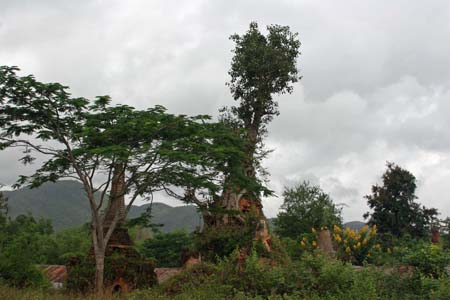
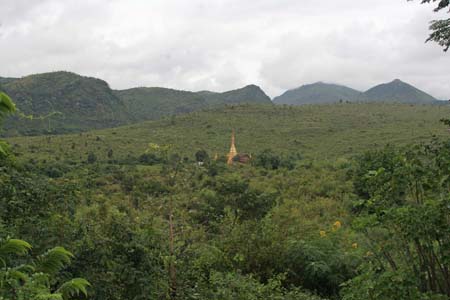
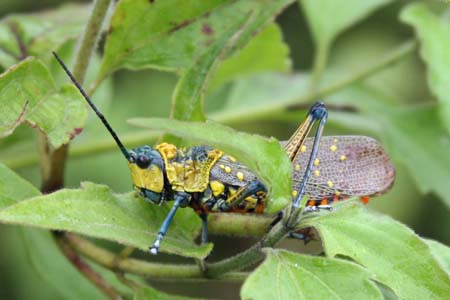

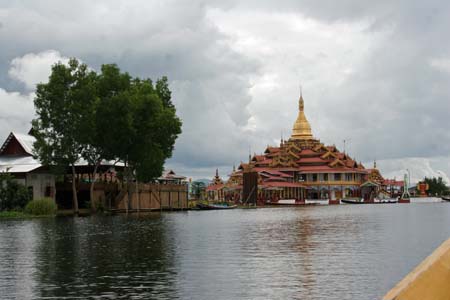
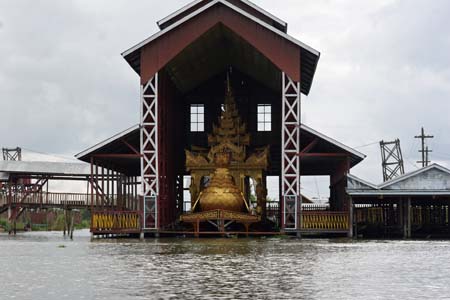
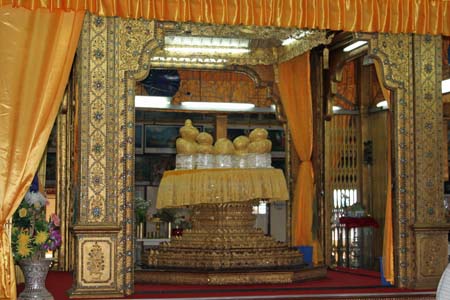
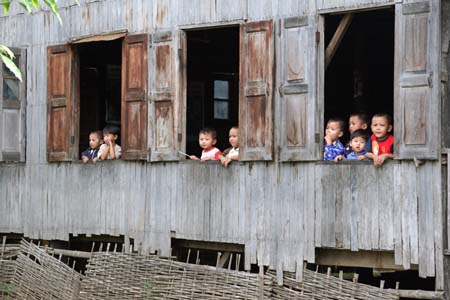
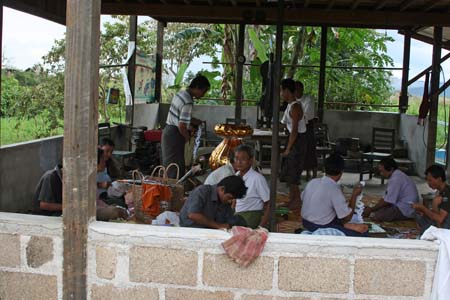
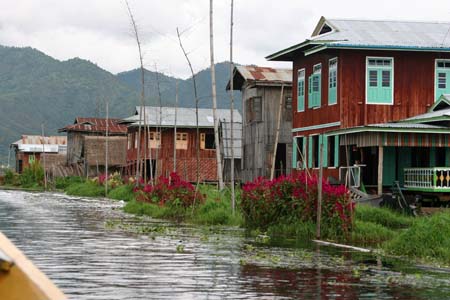
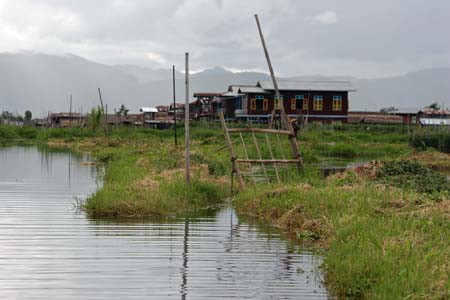
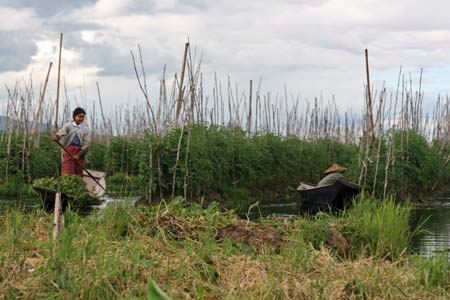
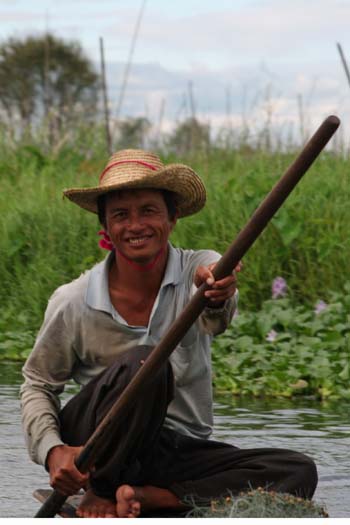
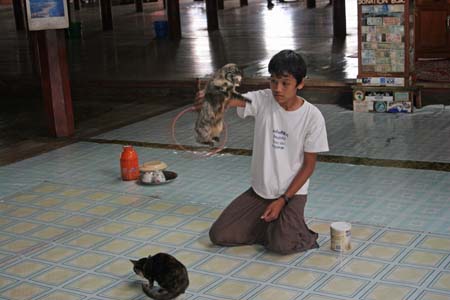
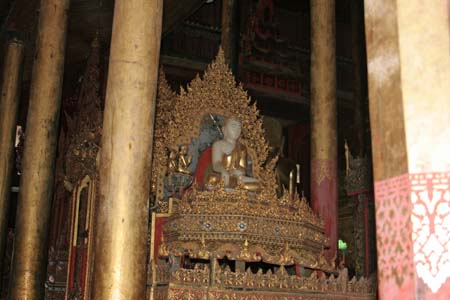
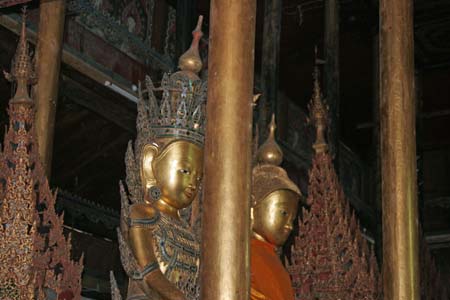
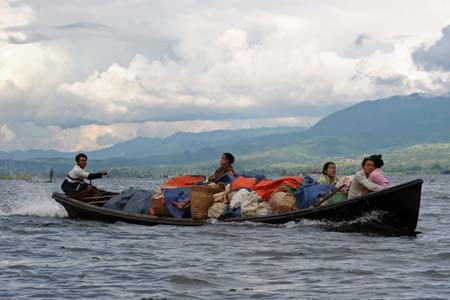

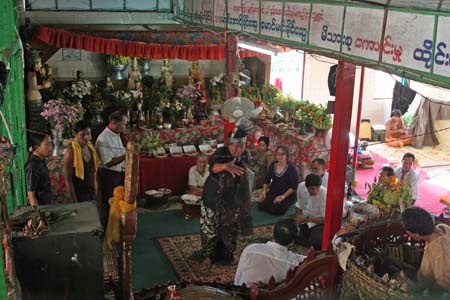
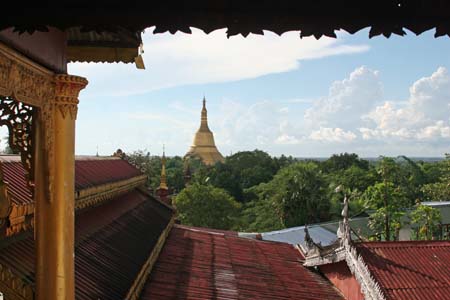
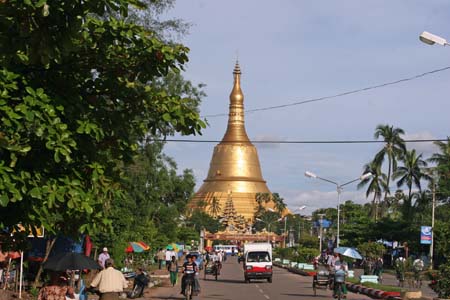
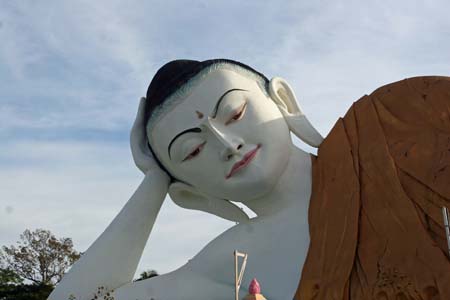
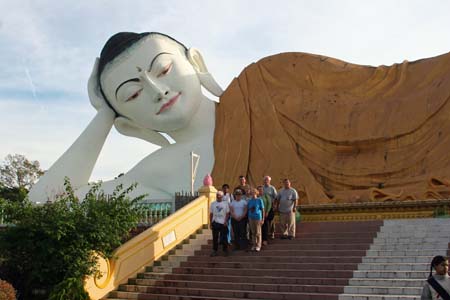
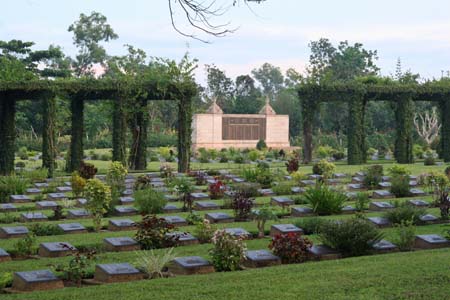
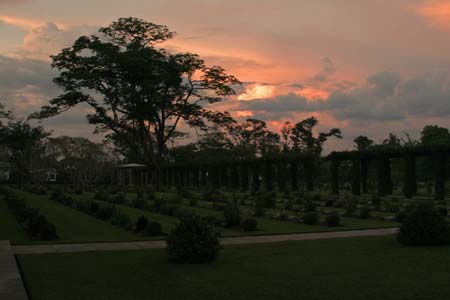
The souvenir vendors in boats in the early photographs would seem to be taking a full-on assault. I assume that the boats are sufficiently well-helmed or moving slowly so that too many collisions don’t take place.
Hello Pierro,
I am from Myanmar and I just came across your blog and saw your photos from Myanmar..Now I am developing a travel website and I am needing phots for varoius destinations of Myanmar so what I would like to request is to kindly give me copyright permission to use ur phots in my new website…
Thanks and regards
Khine Zaw
Khine Zaw,
I am glad to hear that you like the pictures.
I have no problems if you use the photos from my Blog as long as there is a mention of where they come from with a link to the blog.
Pierreo